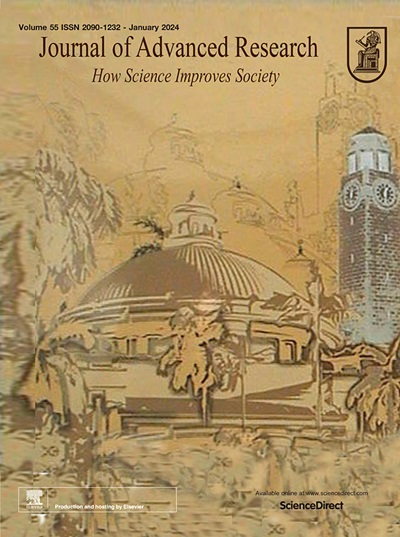The LoMYB26/LoJAZ4-LoCOMT module regulates anther dehiscence via Jasmonic acid-mediated endothecium lignification in lily
IF 11.4
1区 综合性期刊
Q1 MULTIDISCIPLINARY SCIENCES
引用次数: 0
Abstract
Introduction
Timely anther dehiscence is a key step for successful sexual reproduction in plants. Secondary cell wall thickening of anther endothecium is a vital process during anther dehiscence that provides an indispensable mechanical force for successful dehiscence. Anther dehiscence depends on anther lignification, and it is a timely and sophisticated process regulated by phytohormones and transcription factors. However, whether endothecium lignification occurs during anther dehiscence in lily and underlying mechanisms are still largely unclear.Objectives
Our work focuses on identifying the course of endothecium lignification during anther dehiscence and elucidating the molecular mechanisms underlying endothecium lignification-dependent anther dehiscence in lily.Methods
Lignin fluorescence analysis and ultraviolet spectrophotometry were employed to elucidate the endothecium lignification process. Target genes were isolated from the transcriptomic data of anther dehiscence and lignification process. Virus-induced gene silencing (VIGS) and transient overexpression in lily anthers were used to analyze the LoMYB26 function. Yeast one-hybrid (Y1H), electrophoretic mobility shift assay (EMSA), and dual-luciferase (LUC) assay analyzed the regulatory mechanisms. Yeast two-hybrid (Y2H), luciferase complementation imaging (LCI), and bimolecular fluorescence complementation (BiFC) assays illustrated the interaction between LoMYB26 and LoJAZ4.Results
Our results showed that endothecium lignification occurred in S6–S7 stages when anther dehiscence had not yet occurred. The R2R3-type MYB transcription factor, LoMYB26, was found to promote endothecium lignification. LoMYB26 directly bound to the Caffeic Acid O‐methyltransferase (LoCOMT) promoter and activated its transcription. Meanwhile, LoMYB26 interacted with jasmonate-ZIM domain protein 4 (LoJAZ4), which repressed the LoMYB26-mediated activation of LoCOMT transcription. Additionally, the exogenous application of methyl-jasmonate (Me-JA) induced LoMYB26 transcription and promoted endothecium lignification.Conclusion
Our findings demonstrate that LoMYB26 promotes endothecium lignification and anther dehiscence. LoMYB26 interacted with LoJAZ4, forming a heterodimer that participates in JA-mediated endothecium lignification and anther dehiscence. This study offers valuable insights and a theoretical foundation for the breeding of anther-indehiscent lily.

LoMYB26/LoJAZ4-LoCOMT模块通过茉莉酸介导的内生木质素作用调控百合花药裂解
导言及时的花药开裂是植物有性生殖成功的关键步骤。花药内皮细胞的次生细胞壁增厚是花药开裂过程中的一个重要过程,它为成功开裂提供了不可或缺的机械力。花药开裂取决于花药木质化,这是一个受植物激素和转录因子调控的及时而复杂的过程。目的 我们的工作主要是确定百合花药开裂过程中内皮层木质化的过程,并阐明内皮层木质化依赖花药开裂的分子机制。方法 采用木质素荧光分析和紫外分光光度法阐明内皮层木质化过程。从花药开裂和木质化过程的转录组数据中分离出目标基因。利用病毒诱导的基因沉默(VIGS)和在百合花药中的瞬时过表达来分析 LoMYB26 的功能。酵母单杂交(Y1H)、电泳迁移实验(EMSA)和双荧光素酶(LUC)实验分析了调控机制。结果我们的研究结果表明,内皮层木质化发生在S6-S7阶段,此时花药尚未开裂。研究发现,R2R3 型 MYB 转录因子 LoMYB26 能促进内皮层木质化。LoMYB26 直接与咖啡酸 O-甲基转移酶(LoCOMT)启动子结合并激活其转录。同时,LoMYB26 与茉莉酸-ZIM 结构域蛋白 4(LoJAZ4)相互作用,抑制了 LoMYB26 介导的 LoCOMT 转录激活。此外,外源施加茉莉酸甲酯(Me-JA)可诱导 LoMYB26 的转录并促进内皮层木质化。LoMYB26 与 LoJAZ4 相互作用,形成一个异源二聚体,参与 JA 介导的内皮层木质化和花药开裂。这项研究为花药开裂百合的育种提供了有价值的见解和理论基础。
本文章由计算机程序翻译,如有差异,请以英文原文为准。
求助全文
约1分钟内获得全文
求助全文
来源期刊

Journal of Advanced Research
Multidisciplinary-Multidisciplinary
CiteScore
21.60
自引率
0.90%
发文量
280
审稿时长
12 weeks
期刊介绍:
Journal of Advanced Research (J. Adv. Res.) is an applied/natural sciences, peer-reviewed journal that focuses on interdisciplinary research. The journal aims to contribute to applied research and knowledge worldwide through the publication of original and high-quality research articles in the fields of Medicine, Pharmaceutical Sciences, Dentistry, Physical Therapy, Veterinary Medicine, and Basic and Biological Sciences.
The following abstracting and indexing services cover the Journal of Advanced Research: PubMed/Medline, Essential Science Indicators, Web of Science, Scopus, PubMed Central, PubMed, Science Citation Index Expanded, Directory of Open Access Journals (DOAJ), and INSPEC.
 求助内容:
求助内容: 应助结果提醒方式:
应助结果提醒方式:


